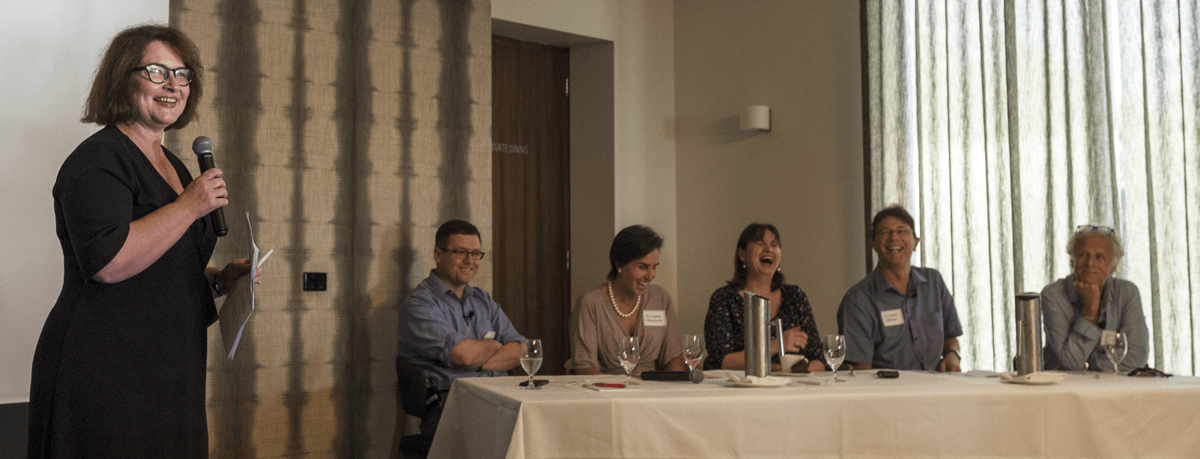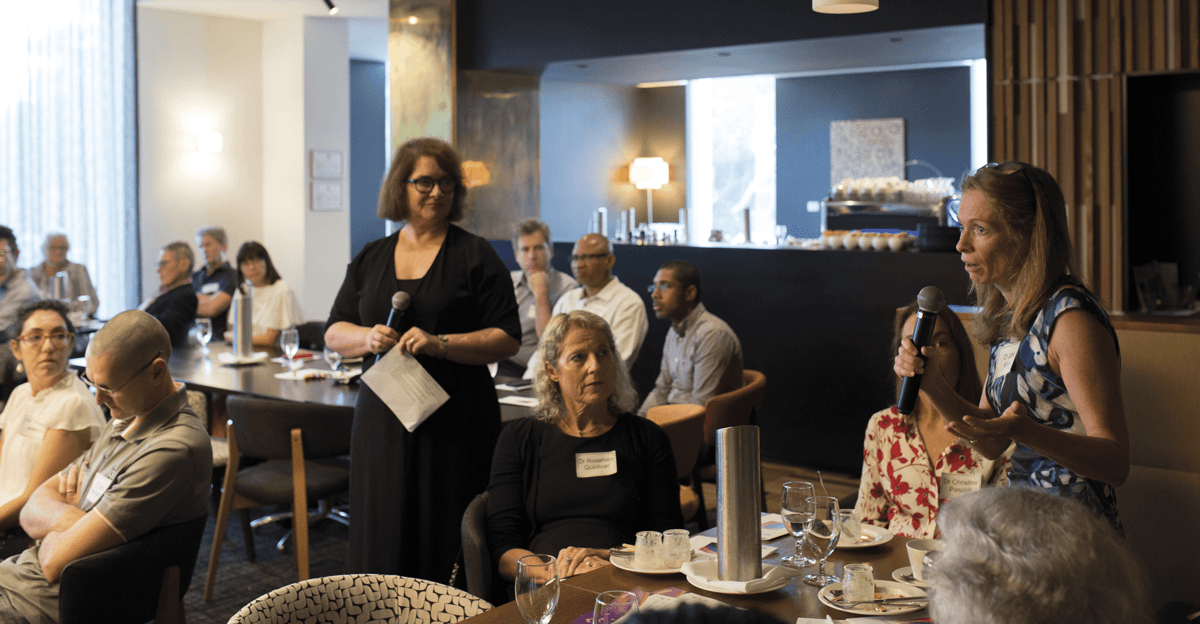Doctors go to work to help improve the lives of other people but increasingly are finding that the system in which they work and the negative culture that in some workplaces surround it is making them sick. Medical Forum’s Doctors Drum explored these complex issues at its breakfast meeting: Workplace Culture: the Good, the Bad & the Ugly.
There were examples of great collaborative working environments and there were examples of top heavy, insensitive bureaucratic ones where numbers and throughput overshadowed the humanity of the work. Then there are the bullies – those who have got through the system, and if they can do it, others can too.
The breakfast was sponsored by Clinical Labs Pathology and the Doctors Health Advisory Service of WA which is our doctors’ lifeline for help and support: www.dhaswa.com.au
Around 71% of hospitals reported discrimination, bullying or sexual harassment at their campuses in the past five years, with bullying the most frequently reported issue, according to the Australian Senate Committee on the medical complaints process, citing RACS’ Expert Advisory Group.
 “Despite the consensus that bullying and harassment are unacceptable, there is concern that the actual prevalence of such behaviour is unknown or underreported,” the Senate Committee concluded.
“Despite the consensus that bullying and harassment are unacceptable, there is concern that the actual prevalence of such behaviour is unknown or underreported,” the Senate Committee concluded.
The first Doctor’s Drum for 2019 captured many of the Senate’s themes, the bad versus the good in medical workplace culture. Good communication seemed to be key to solving problems, along with old-fashioned caring for each other.
Positives of good culture
But what is culture? One of the panellists stated that he came from a good workplace culture.
“I think that we all know what culture means or is, but I had to look at what it is historically and ‘cultura’ is the origin of the word. In fact it is a word about worship, to believe in somebody else’s ideas and to pay reverence to them. Which is what we should think about when we think about workplace culture, how we actually interact and pay homage to the spirit of the organisation,” the panellist said.
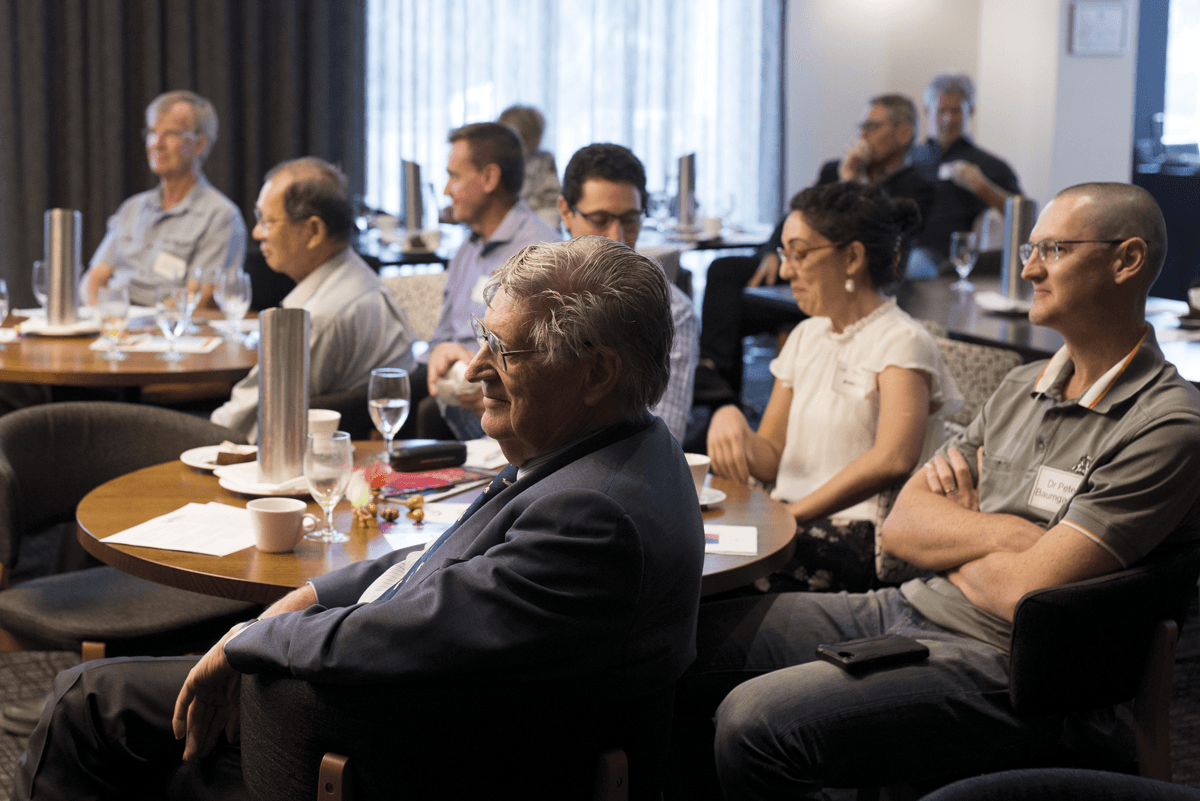 “It is something that can be managed or can be made, it is not necessarily an innate concept. In fact it is the development of the mind’s faculties or manners, and manners is an important part of good culture. Because most of bad culture is bad manners or bad behaviour that can be refined by education and training.”
“It is something that can be managed or can be made, it is not necessarily an innate concept. In fact it is the development of the mind’s faculties or manners, and manners is an important part of good culture. Because most of bad culture is bad manners or bad behaviour that can be refined by education and training.”
“Good culture is a good thing, it attracts talent, drives happiness, and it comes from good performance, it drives that quadruple aim we talk about in business, good outcomes, happy staff, good budget outcomes. Culture does that. But it is not amenable to legislation and regulation, it needs to be in the DNA.”
Good culture, the panellist continued, should be found in all departments, including emergency.
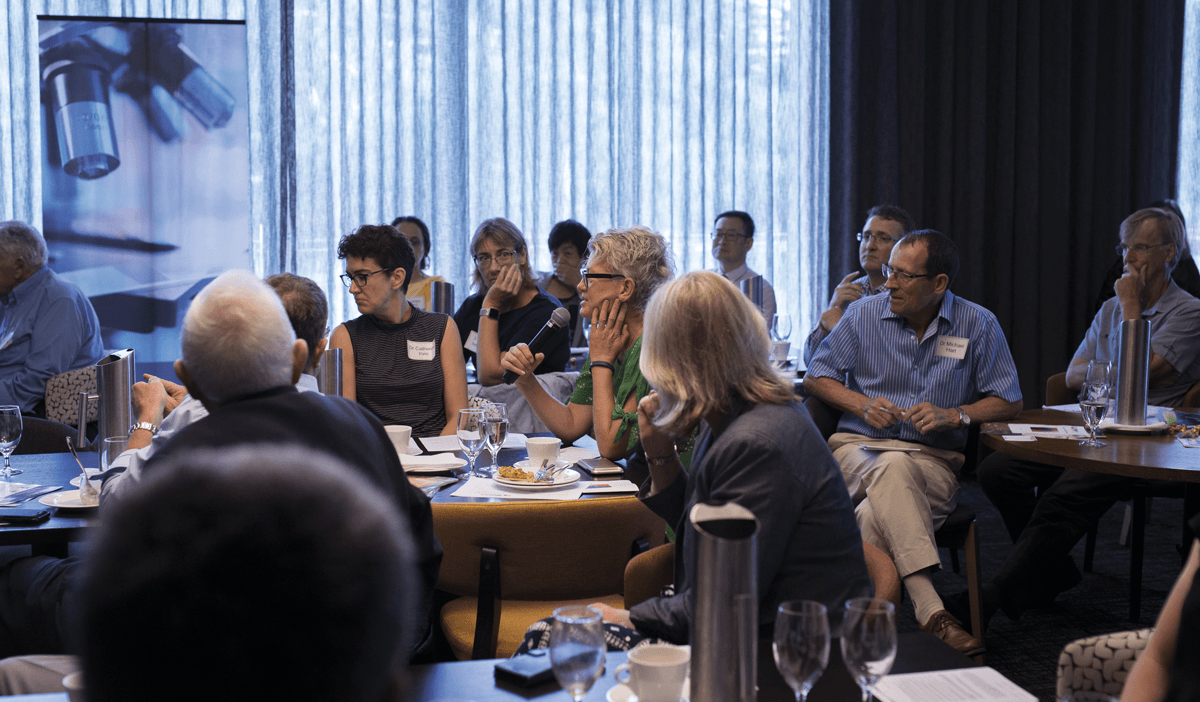 “Anybody who has been an ED doctor will know that an ED is a chaotic, stressful and disorganised place to work and I did get approval to use the word disorganised. I don’t mean that in a way that says that the place is not well run. The workflow is very disorganised and anything can happen at any time so, of course, it could be a place where there is stress, where there is bad culture, bullying and harassment.”
“Anybody who has been an ED doctor will know that an ED is a chaotic, stressful and disorganised place to work and I did get approval to use the word disorganised. I don’t mean that in a way that says that the place is not well run. The workflow is very disorganised and anything can happen at any time so, of course, it could be a place where there is stress, where there is bad culture, bullying and harassment.”
“Our ED has put in numerous strategies for wellness for our junior doctors and senior doctors have meetings to talk about wellness, they have artwork on the wall every month; someone can bring in their artwork or photos. So what you have is a very stressful place that is very well supported and drives fantastic culture.”
When workplace culture goes bad it can mean various things, as the next panellist’s personal experience revealed: Keen on paediatrics from the start, the panellist started in a ‘good workplace culture’, did full-time clinical work until 2005 and then became a head of department.
 “I had a full-time clinical load as head of department because the roster had already been written for the next few months. I ended up doing the emerging leaders’ program which added completely to my stress levels and workload and I actually engaged my own management coach at my own expense to try to help me through the chaos. I had an increasing feeling of the service being out of control over the first 12 months.”
“I had a full-time clinical load as head of department because the roster had already been written for the next few months. I ended up doing the emerging leaders’ program which added completely to my stress levels and workload and I actually engaged my own management coach at my own expense to try to help me through the chaos. I had an increasing feeling of the service being out of control over the first 12 months.”
She reflected on her department. “There had been a trebling in the occasions of service over the five years with no increase of FTE in any area. There was increased patient acuity and complexity in paediatric oncology; lots of increasing family expectations and a general anger about any child who was diagnosed with cancer.”
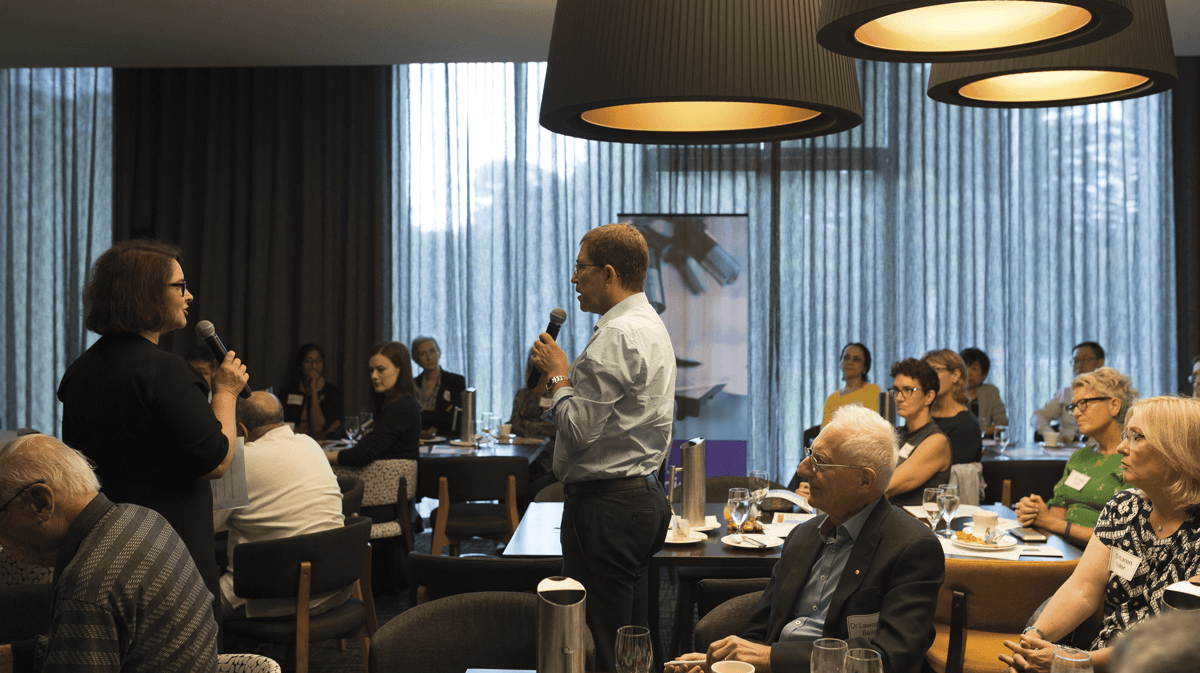 The panellist wrote a comprehensive document providing short, medium and long-term solutions to the problems. While interest was shown, little action ensued. She attended a Harvard program on negotiating, at her own expense. On her return, her report did not get her accolades, but rejection from her colleagues.
The panellist wrote a comprehensive document providing short, medium and long-term solutions to the problems. While interest was shown, little action ensued. She attended a Harvard program on negotiating, at her own expense. On her return, her report did not get her accolades, but rejection from her colleagues.
“I managed to achieve pariah status in a hospital where I had worked for around 10 years, where I knew everybody and I thought they knew who I was; because I had become the ‘princess in Oncology who was looking for money and making out that we were in a terrible state’.”
“It was an incredibly isolating experience. And I found it personally very stressful and I do get it that it is part of my personality, but that’s what it was for me.”
Her efforts to increase funding worked, but getting the FTE to her area was not so easy. We were eventually able to fill it two years later.”
The panellist went on to describe instances with a patients’ family where she felt unsupported, which she said led to a deterioration in her physical and mental health.
 After confrontations she would develop chest pain, palpitations and shortness of breath as well as tremors leading eventually to exhaustion and emotional lability where she could not get out of bed in the mornings.
After confrontations she would develop chest pain, palpitations and shortness of breath as well as tremors leading eventually to exhaustion and emotional lability where she could not get out of bed in the mornings.
“I continued to work because that’s what you do. I turned up to work every day. I had meetings with the executive to inform them of my health issues. They were very difficult meetings and at the end of one, I think the quote of the episode, ‘You don’t look like a woman on the edge, in fact you look absolutely fabulous’.”
The panellist resigned from her position soon after being asked to see a psychiatrist.
“Clearly I, along with my clinical psychologist, GP, and rehabilitation psychologist were just not capable of creating my own return-to-work plan,” the panellist said. She eventually did return to work, but eventually resigned from the position and became a general paediatrician and teacher.
Sparking discussion
The reactions to these first two presentations brought up issues for some and brought out proposed ways to avoid or minimise bad culture.
 One said if doctors were footballers they would be better looked after. “A footballer would get a sports psychologist, an organiser, a dietician, people telling us not to drink alcohol, get drunk, and not sleep the night before exams. Why can’t doctors be looked after in this way? And waiting for us to be ill is part of the problem. Only seeing people when you have a problem is the problem?”
One said if doctors were footballers they would be better looked after. “A footballer would get a sports psychologist, an organiser, a dietician, people telling us not to drink alcohol, get drunk, and not sleep the night before exams. Why can’t doctors be looked after in this way? And waiting for us to be ill is part of the problem. Only seeing people when you have a problem is the problem?”
“How can we introduce some kind of system that looks after us when we are well? When can we stop funding people at the end of the line with their blocked arteries and when can we start funding exercise and mindfulness and good health exercises,” one asked.
One audience reaction was, simply, to walk away. “I spent 10 years working in a practice and left two years ago and realised how unsafe it was for me. I was a student educated to ‘speak truth to bullshit.’ In my experience most people walk when they come across a workplace culture they don’t like.”
The panel identified a number of specific systemic solutions.
 The Notre Dame medical school has an eight-week program called Essence Plus, which starts in first year, and is underpinned by mindfulness, and remains part of the MD program for its duration. SJG Midland Hospital’s staff engagement was cited as a successful example of a workplace culture. Regular meetings are held between staff, including junior doctors, and management and the director of mission actively leads the culture of the organisation.
The Notre Dame medical school has an eight-week program called Essence Plus, which starts in first year, and is underpinned by mindfulness, and remains part of the MD program for its duration. SJG Midland Hospital’s staff engagement was cited as a successful example of a workplace culture. Regular meetings are held between staff, including junior doctors, and management and the director of mission actively leads the culture of the organisation.
The panel agreed that there were good and bad cultures across the state and within the same organisation, and that work representatives, played a key role in mediating complex disputes.
Can you buy love?
While organisational structures were seen as important, the panel did not see any substitute for simple acts such as knowing staff member’s names. Money was not necessarily key to solving workplace abuse.
Simple acts of decency were seen as significant.
“A lot of it does not cost a lot of money. Just treating someone with respect, knowing their name. I know specialists in the tertiary sector who do not know the name of their junior doctor, but in their private work they are best buddies with their junior doctor,” said one doctor.
Another responded: “I would be horrified if I didn’t know the name of my junior doctor. We are lucky at my hospital because we are not strictly a private hospital, we also deal with public patients. It is not the patients that are different, but the organisation and how it works.”
The problem manager
The panel was asked, early on, whether they would employ the brilliant, but rude, expert, putting skills above respect.
One asked about what could be done about problematic management who get anointed and appointed but about whom staff are too frightened to complain? How can change be driven from the bottom up?
Some thought that difficult managers would fade but ultimately a good culture would keep them out in the first place.
Panel conclusions
The panel was asked to summarise the key points necessary for a good workplace culture.
- “Be a positive example, that’s what we can do for our colleagues and that will bring good culture”.
- “Be a clinical leader and create a forum for your junior staff to talk about the issues with you as their clinical leader.”
- “Have a coffee with your juniors and spend a few minutes to go through both non-clinical and clinical issues so the whole team can get to know each other.”
- “Be respectful to the staff, no matter what their seniority, and treat them how you would like to be treated yourself.”
- “Show empathic clinical leadership.”


